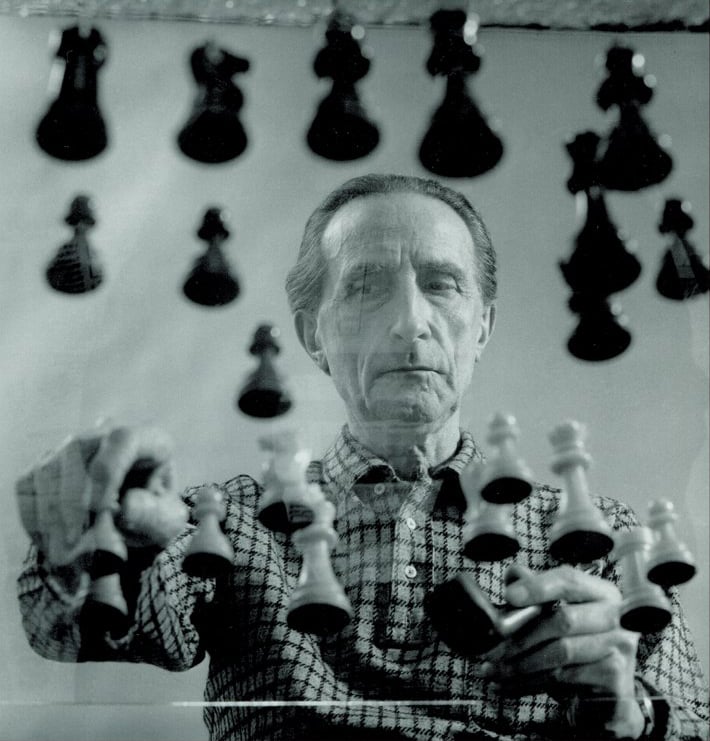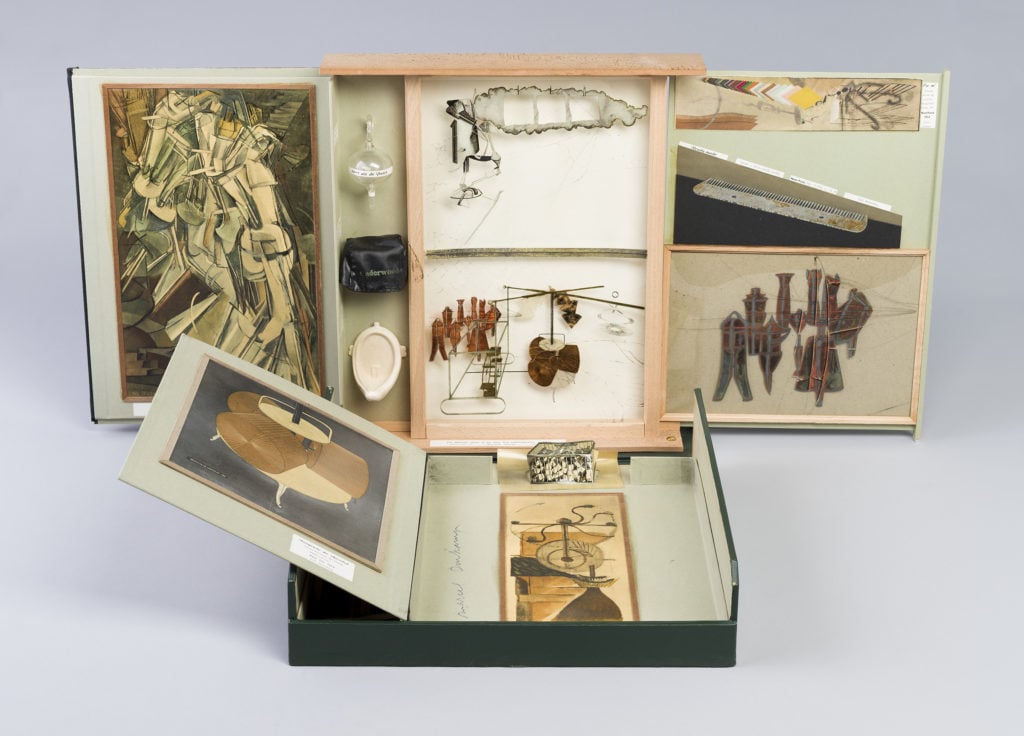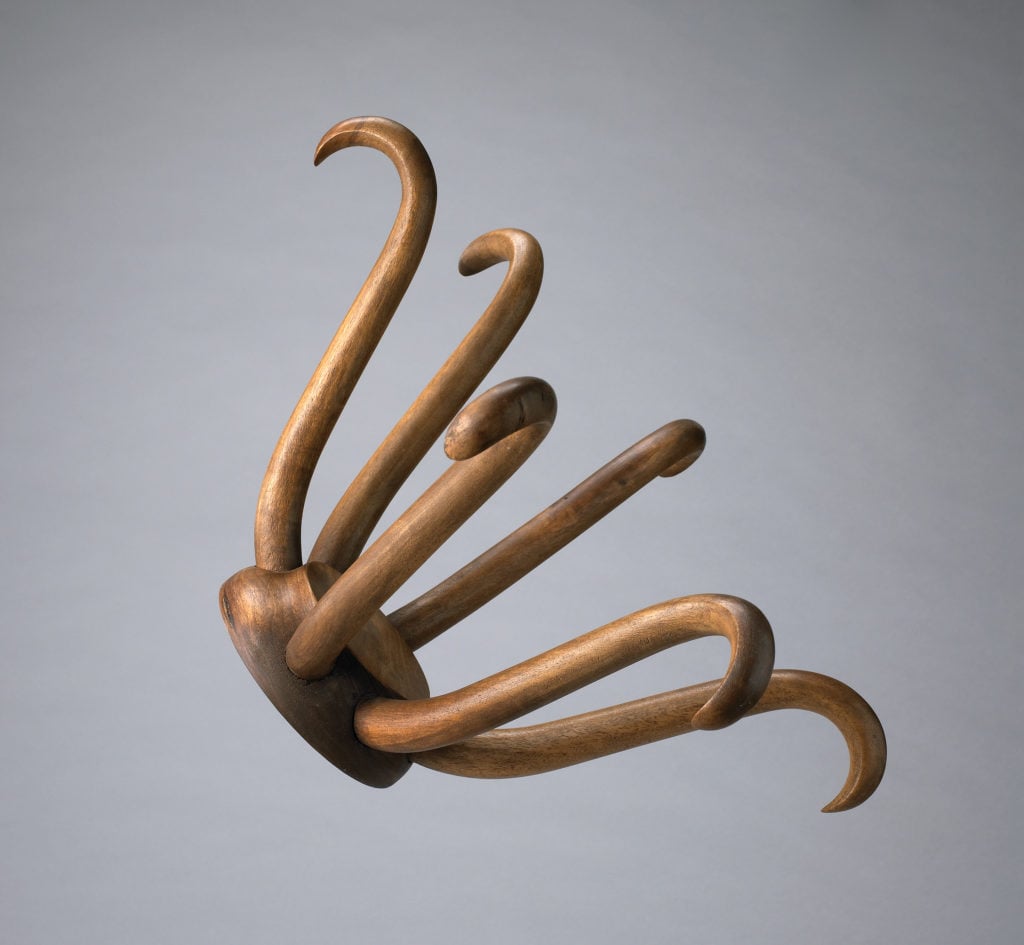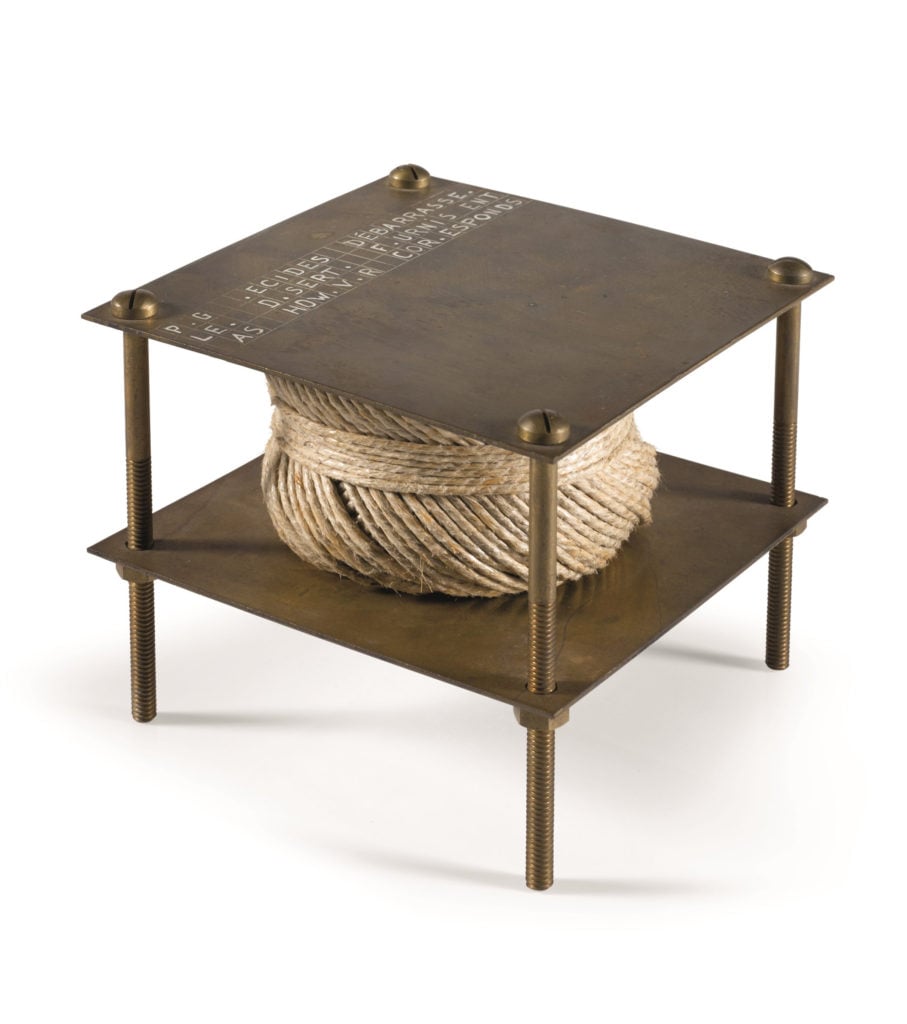Art World
Readymade or Not, a 35-Work Donation Just Gave DC’s Hirshhorn Museum One of the Largest Collections of Marcel Duchamp in the Country
The museum previously only owned one work by the artist.

The museum previously only owned one work by the artist.

Sarah Cascone

The Smithsonian’s Hirshhorn Museum and Sculpture Garden in Washington, DC, will soon be home to one of the country’s foremost collections of work by legendary conceptual artist Marcel Duchamp (1887–1968), thanks to a promised gift from local collectors Barbara and Aaron Levine. Currently, the Hirshhorn has just one late Duchamp sculpture.
The gift, timed to the 50th anniversary of Duchamp’s death, includes 35 pieces by the artist, as well as rare exhibition catalogues and ephemera, and 150 books about him dating back to the 1930s. There are also related works by Duchamp’s contemporaries, including portraits of him by Man Ray, Henri Cartier-Bresson, Diane Arbus, Irving Penn, and others.
“When one thinks of 20th-century art, Duchamp would have to be one of the top five most influential artists, and you can see his ongoing influence on the current generation of artists,” Melissa Chiu, the museum’s director, told artnet News. “Duchamp’s creation of the readymade was the ultimate radical gesture, over 100 years ago—and yet it still feels so fresh!”
The Levines began collecting Duchamp two decades ago. “There’s something so provocative and mischievous about Duchamp that really fits their personalities,” Dan Sallick, chair of the Hirshhorn’s board and a close friend of the couple, told artnet News.
“If a museum like the Hirshhorn wanted to put a collection like this together today, it would almost be impossible,” he added. “The work just isn’t available anymore.”

Marcel Duchamp, The Box in a Valise/Boite en Valise (Series E) 1963. © Association Marcel Duchamp/ADAGP, Paris/Artists Rights Society (ARS), New York 2018.
Highlights of the donation include Readymades such as Hat Rack and Comb, as well as works on paper including Female Hanged Body. There is also the artist’s Box in a Valise, a set of 60 small-scale reproductions the artist made of his own work that Chiu described as “the ultimate portable museum. It’s a compendium of Duchamp works in miniature.”
The Hirshhorn plans to debut its new Duchamps with an exhibition in fall 2019. “The museum will be looking at the context in which Duchamp worked, in the early machine age of the 20th century. We’re at a similar moment for the 21st century digital age,” Chiu said. “We’ll look at at how his work has impacted artists today, as well provide a historical sense of how Duchamp was able to come up with this radical idea of a machine-made object that he called art.”

Marcel Duchamp, Porte Chapeau (Hat Rack) 1917/1964. © Association Marcel Duchamp/ADAGP, Paris/Artists Rights Society (ARS), New York 2018.
Sallick believes the Levines’ gift—the single most significant donation since Joseph Hirshhorn’s two gifts (the founding gift, and the one upon his death in 1981)—helps connect the institution’s original holdings in modern painting and sculpture to works by the likes Joseph Kosuth and On Kawara acquired from Giuseppe Panza’s collection in 2008.
“These are artists who were really inspired by Duchamp,” he said. “This gift really helps to round out the foundation of the collection.”

Marcel Duchamp, The Bride Stripped Bare of Her Bachelors, Even (The Green Box) 1934. © Association Marcel Duchamp/ADAGP, Paris/Artists Rights Society (ARS), New York 2018.
The Levines have a longstanding relationship with the Hirshhorn—Barbara is a trustee emeritus, having served on the board from 2000 to 2012—but it was the museum’s audience that really convinced the couple that the museum was the right home for their collection.
“Their Duchamp collection is an incredible cultural addition to the National Mall, and there’s no better place than to introduce the public to his ideas,” Sallick said. “The Levines got very excited about the possibility of sharing this with a really broad audience well beyond just the art world. A whole mix of people from all over the world come through our doors.”

Marcel Duchamp, With a Hidden Noise (A Bruit Secret) 1964. © Association Marcel Duchamp/ADAGP, Paris/Artists Rights Society (ARS), New York 2018.
“We’re the national museum of Modern art, and we receive nearly a million visitors a year. For many of those visitors, it’s their first visit to a contemporary art museum,” added Chiu. But today’s audiences are primed to appreciate Duchamp’s contributions, she believes: “We live at a moment in which so many people are making things—you need only look on YouTube. There is a great deal of interest in the creative act, and I think there’s no more creative act that designating a found object as art.”